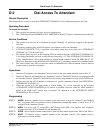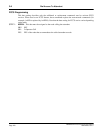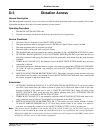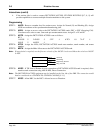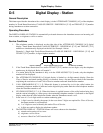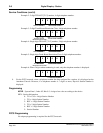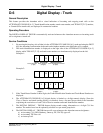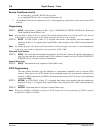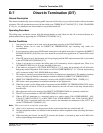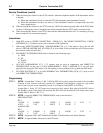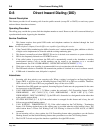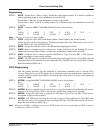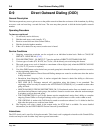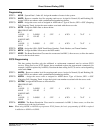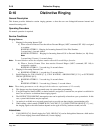
NEAX2400 IPX Feature Programming Manual
NDA-24297, Issue 1
Page 277
Direct-In Termination (DIT) D-7
D-7 Direct-In Termination (DIT)
General Description
This feature automatically routes incoming public network calls directly to a pre-selected station without Attendant
assistance. The call can then be processed by the called party. THREE-WAY CALLING [T-2], CALL TRANSFER
[C-10], etc., are handled in the same manner as any normal trunk call.
Operating Procedure
The calling party, outside the system, dials the desired number as usual. However, the call is answered directly at a
predetermined station, bypassing the ATTENDANT CONSOLE [A-3].
Service Conditions
1. Any group(s) of trunks can be used, up to the maximum capacity of the NEAX2400 IPX.
2. Bothway trunks can be used for DIRECT-IN TERMINATION, but incoming only trunks are
recommended.
3. It is not necessary to have special DID trunk connections to the public network as is required with DIRECT
INWARD DIALING [D-8]. However, care should be exercised in the application of Central Office trunk
hunting.
4. If the DIT station is busy, the incoming call is kept ringing until the DIT station becomes idle, or forwarded
to the ATTENDANT CONSOLE [A-3].
5. If there is no answer at a station, the calling party will continuously receive ringback tone. There is no
AUTOMATIC RECALL [A-8] to the Attendant in this case.
6. If the station is assigned to a STATION HUNTING [S-7, 8, 9] group, the incoming call will follow the
hunt group station assignment. If the station is in a CALL FORWARDING [C-2, 3, 5] mode, the incoming
call is connected to the CALL FORWARD target station.
7. This feature is normally used where direct-in service is required on a limited basis. The number of stations
serviced is effectively limited to the number of trunks available for DIRECT-IN TERMINATION.
8. DIRECT-IN TERMINATION is mutually exclusive with NIGHT CONNECTION - FIXED [N-1].
9. DIT trunks can be programmed to terminate elsewhere in the Night mode.
10. When the system is in the Night mode of operation and the DIRECT-IN TERMINATION (DIT) station
is busy, the call will divert to TAS if provided, otherwise, the call will wait on the busy station until it
becomes idle.
11. More than one trunk can be arranged for DIRECT-IN TERMINATION to a particular station line.
12. The DIT call can terminate to a DO NOT DISTURB [D-11D] station.
13. When a DIT call terminates to a restricted station or a station setting CALL FORWARDING - ALL
CALLS [C-5]/BUSY LINE [C-2], or MULTIPLE CALL FORWARDING - ALL CALLS [M-44] / BUSY
LINE [M-24] to a restricted station, the call is routed to the Attendant and terminates at the “ICPT” key
on the ATTENDANT CONSOLE [A-3].
Note: This service can be activated in system data.
14. After a call is answered, it can be processed by the called station like any normal trunk call.
15. Only the telephone number is available for the destination station assignment when activating this feature
via FCCS.
16. When activating this feature via the FCCS network, this feature is activated by data in the LDM of the
node accommodating the terminated COT.



